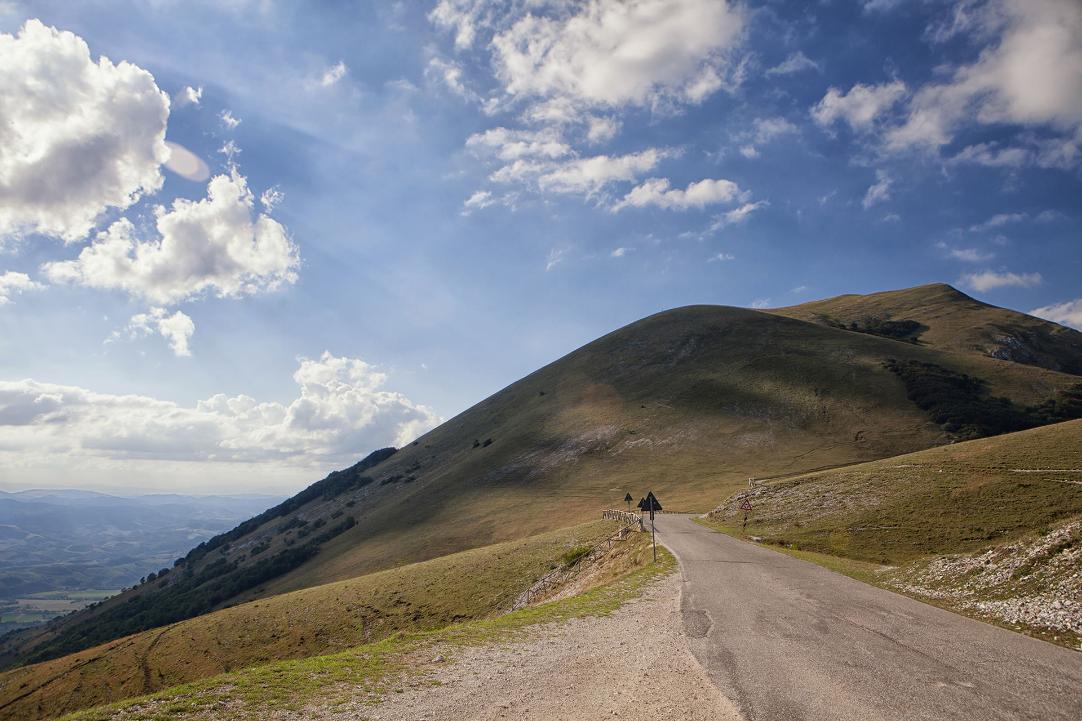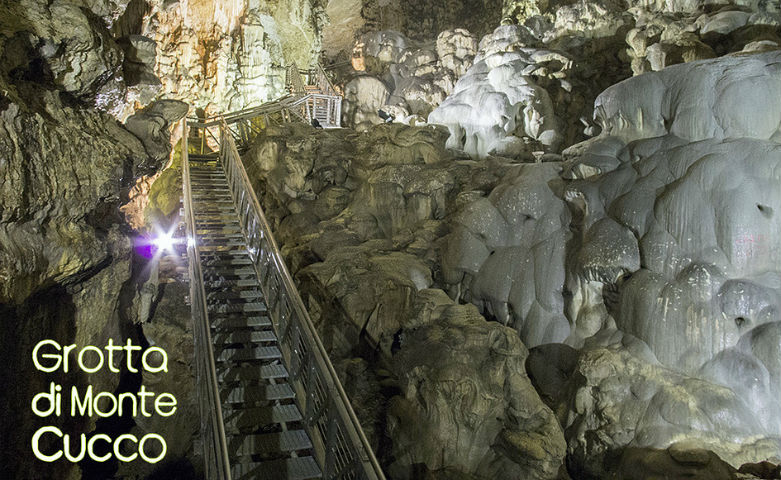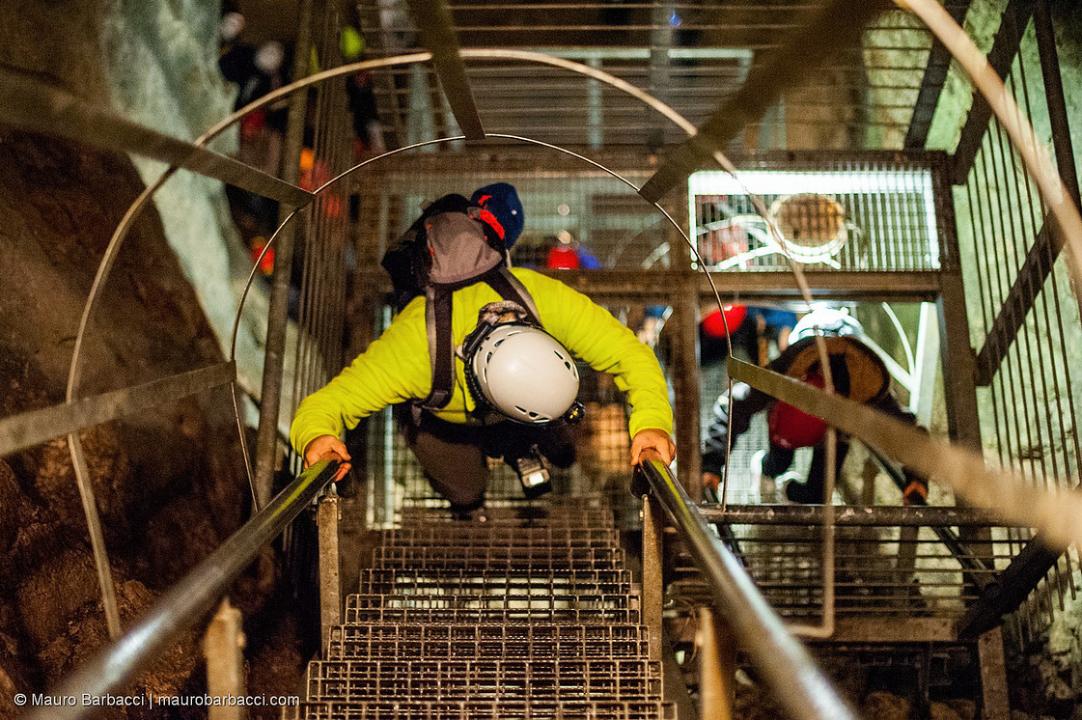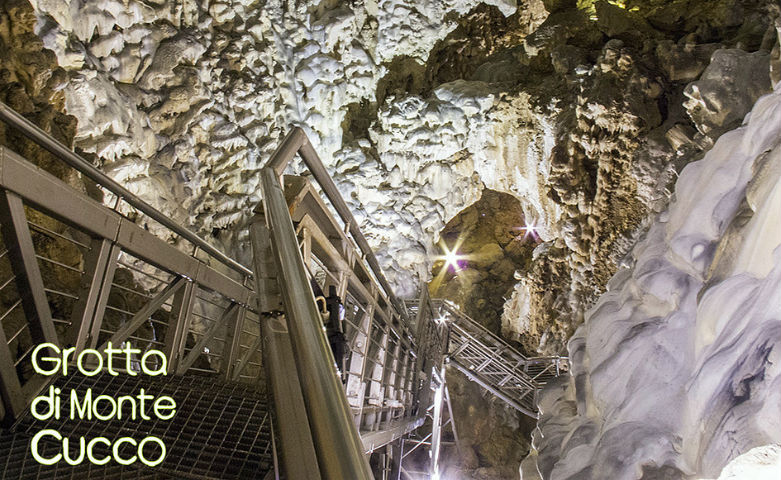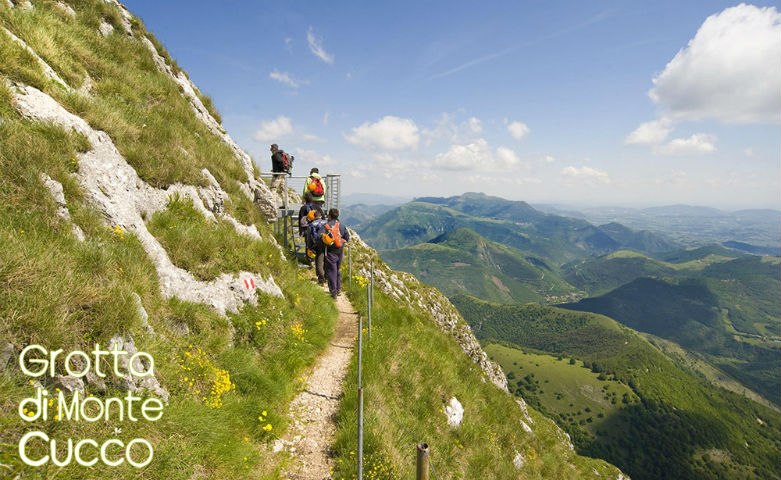“Out of ordinary space and time”
The Cave of Monte Cucco, open to tourist, scientific and educational visits since 2009, represents one of the most important underground systems in Europe. It is located in the municipality of Costacciaro, a few kilometres from Gubbio.
The entire underground system extends for about 35 km, with a maximum depth of 922 m inside the mountain of the same name. The route, which is usually accessed from the entrance at an altitude of 1,390 metres called “Pozzo Miliani”, winds its way for eight hundred metres through stalactites and stalagmites, galleries, labyrinths and tunnels, leading to the discovery of an incredible natural spectacle.
Their karst formation dates back hundreds of thousands of years: as a result of enormous underground pressures generated also by volcanic activity over the last million years, boiling fluids, laden with minerals and corrosive acids, rose up, generating thermal and sulphurous water springs. During this phase, tunnels, deeper shafts and huge halls were formed. At the end of this endogenous action, when the thermal and corrosive fluids left the cavities, the meteoric waters were able to penetrate the surface fractures, reaching the previously formed system. This new speleogenetic mode did not entail any substantial changes to the internal system, with the exception of the creation of narrow meanders and tunnels, through which most of the meteoric waters flowed before reaching the underground collectors, and consequently the foot springs, which are at the basis of the millennial process of formation of the stalactites and stalagmites in the cave.
Knowledge of the caves is very ancient, as demonstrated by the discovery in 2004 of an inscription with the date 1499, which could document the first visit of an explorer, and the already known inscriptions, “Ludovico 1551” (perhaps Ludovico Santacroce, a Fabrianese man of arms) and “Adromando 1555” (Ghigi Adramando di Costacciaro, Captain of Fortune in the army of Emperor Charles V in Flanders).
Over the centuries, countless investigations have taken place, leading to new incredible discoveries that have increased the knowledge and fact of this place. Already in the 19th century, the German historian and polygraph Ferdinand Gregorovius was enraptured by its beauty, stating that he had never seen anything like it in any other underground place he had previously visited.
Of the expeditions undertaken to learn more about the secrets of the cave, the most important was conducted between 1883 and 1892 and represents the first scientific exploration conducted by the researcher and mountaineer Giambattista Miliani, after whom the access shaft is named.
Among the most important recent discoveries are the “Buca Futura” (2009) and a new branch called “Cucco Libero” (2011) that is still being explored, and who knows whether this magnificent cave might not hold more in store in the future!
Inside the cave, you can visit several rooms with evocative names such as the Cattedrale (Cathedral) and the Sala Margherita (Margherita Hall), the largest in the entire system, named after the first woman to enter the cave during the Miliani expedition. Or the Sala delle Fontane (Hall of Fountains) and the Giardino di Pietra (Stone Garden), Sala del Becco (Hall of the Beak), Sala Simonetti (Simonetti Hall) and, finally, the Condotte Terminali (Final Channels) and the Sala Terminale (Final Hall).
Each cavity is a succession of impressive stalactite and stalagmite formations, and there are also small lakes and water rivulets along the way. From the Sala Margherita, from which many tunnels and shafts start, we reach the Galleria delle Ossa (Bone Gallery) and the Sala Terminale (Final Hall), consisting of a deposit of bone remains of ancient animals that lived about 20,000 years ago during the last glacial period, such as rhinoceroses, bears, ibexes, martens, deer and bovids.
THE ROUTES
DISCOVERY route
The total duration of the excursion is two to three hours and includes a round trip from Pian di Monte (1197 metres a.s.l.) and a visit inside the Grotta, with access through the Miliani Well, 27 metres deep, where three enormous halls called the Cattedrale, the Sala Margherita and the Sala del Becco will be reached.
TRAVERSED route
The excursion is about 4/5 hours, starting from Pian di Monte and with access to the cave through the 27-metre-deep Pozzo Miliani. In the 800 metres of the route you will visit in quick succession: the Cattedrale, the Sala Margherita, the Sala del Becco, the Sala delle Fontane, until you reach the Secret Passage, which is very suggestive, and the Sala Terminale. It is a circular route that enters through the East entrance of the cave and exits through the North entrance.
ADVENTURE Routes
These are caving routes, not suitable for beginners, accompanied by qualified guides who can also provide equipment. The total duration of the excursion is approximately 5 hours.
For more information visit https://www.grottamontecucco.umbria.it/
























